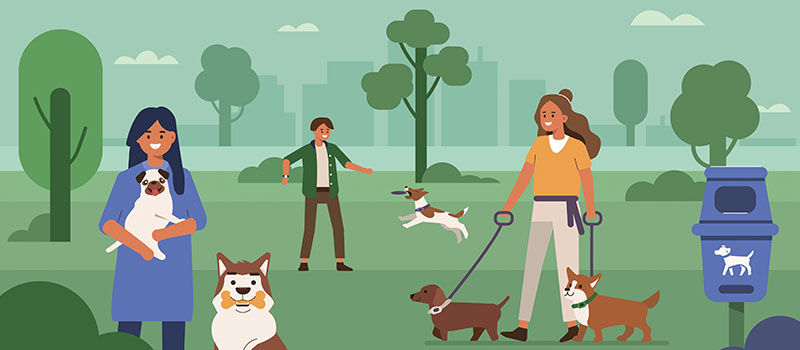What’s the Buzz
The Bee Healthy Blog
Prozac for Dogs: Pros & Cons

If your dog suffers from anxiety disorders, your veterinarian may have recommended Prozac. Please keep reading to learn about the benefits versus risks of using this medicine to manage your dog’s anxiety.
What are selective serotonin reuptake inhibitors?
Prozac (generic: fluoxetine) belongs to a group of drugs called selective serotonin reuptake inhibitors or SSRIs. These are antidepressants used to treat depression, anxiety, panic attacks, certain eating disorders, and obsessive-compulsive disorders in humans.
Prozac can also help to manage anxiety and anxiety-related destructive behaviors in dogs. This medication should only be given to canines after a dog’s anxiety has been medically diagnosed by a veterinarian. Never give human Prozac to your dog without consulting a veterinarian.
How does a selective serotonin reuptake inhibitor work?
An SSRI works by delaying the body’s reuptake of serotonin, a neurotransmitter (natural chemical) in the brain that regulates mood. By making more serotonin available, an SSRI such as Prozac increases feelings of well-being and reduces anxiety.
What anxiety disorders can Prozac treat in dogs?
One of the most common reasons for prescribing Prozac for dogs is severe separation anxiety. The FDA has approved a chewable tablet of fluoxetine for dogs called Reconcile to treat separation anxiety.
This drug can also be used to treat generalized anxiety, thunderstorm and lightning phobia, fear of loud noises, people phobia, and aggression in dogs.
Dogs who are prone to urine marking in the home may benefit from taking Prozac. In addition, the medicine can help reduce compulsive behavior issues such as acral licking or tail chasing. Obsessive-compulsive behaviors like compulsive digging, rock chewing, compulsive swimming, and essentially any species-typical behaviors that are performed excessively can also benefit from Prozac. The medication can be used to manage animal behavior issues arising from prior abuse or neglect.
Essentially, veterinarians prescribe Prozac when anxiety or obsessive behaviors impact the dog’s health and quality of life.
What can Prozac not treat in dogs?
Prozac is not a magic pill and cannot improve your dog’s behavior. It should not be used to treat behavioral issues such as jumping on couches or snagging food off the table.
Can Prozac make anxiety worse in dogs?
Prozac may make anxiety worse in dogs if it is given at high doses. Other effects of high-dose Prozac may include tremors, muscle twitching, restlessness, and panting. Your veterinarian will decide the correct dose based on your dog’s issues and body weight.
What are the pros and cons of Prozac for dogs?
Pros
- Helps in managing separation anxiety and compulsive disorders.
- Generally safe if used as directed.
- Available as a tasty chewable tablet for easy administration.
Cons
- Does not work overnight. Takes 4-6 weeks to have the desired effect.
- Carries a risk of overdose and serious adverse effects like serotonin syndrome.
- Prozac for dogs carries the stigma of giving a human mood stabilizer to pets.
What are the side effects of Prozac in dogs?
Potential side effects of Prozac in dogs include reduced appetite, weight loss, drowsiness, lack of energy, and itching. Very rarely, SSRIs like Prozac can lead to a bad reaction called serotonin syndrome because of dangerously high serotonin levels in the body. This is more likely to occur if your dog is taking other medications that also increase serotonin levels. Before starting Prozac, give the veterinarian a complete list of all the other drugs your dog is taking to avoid serious adverse effects.
How long can you give a dog Prozac?
Your veterinarian may suggest keeping your dog on Prozac for 6-12 months and then slowly tapering down the dose to see if mood stabilization can be maintained without the drug.
Every dog is different, and your dog’s treatment duration will depend on the severity of your dog’s condition. As mentioned above, it takes several weeks before Prozac for dogs produces improvement in symptoms. Also, if Prozac helped tremendously for one dog, it does not mean it will work equally well for other dogs, so it is a question of trying.
It is worth noting that Prozac alone is not a cure-all. It only works with other methods of behavioral modification. Most dogs need augmentation strategies such as desensitization or a training program to reduce separation anxiety symptoms and improve the dog’s life.
Is trazodone or Prozac better for dogs?
Trazodone (brand name Desyrel) belongs to a group of drugs called serotonin antagonists and reuptake inhibitors (SARIs). This medication also works by making more serotonin available in the brain. It is a human medicine sometimes used off-label by veterinarians for cats and dogs.
Your veterinarian will help you decide between Prozac, trazodone, and other compatible medications. The key differences to keep in mind between trazodone versus Prozac for dogs are as follows:
- Trazodone can be used as needed for short-term management of anxiety in stressful situations, such as visits to the vet or groomer or long plane or car rides.
- It can be used to keep a dog calm, for example, after orthopedic surgery when excessive movement is discouraged.
Essentially, Prozac for dogs is usually prescribed to treat a chronic condition, and it takes several weeks before you see an improvement in your dog’s behavior. In contrast, trazodone can be used for short-term stress relief by giving the medication 1-2 hours before the anticipated event, and your dog’s behavior will return to normal once the effects of the drug wear off.
References:












SOCIAL